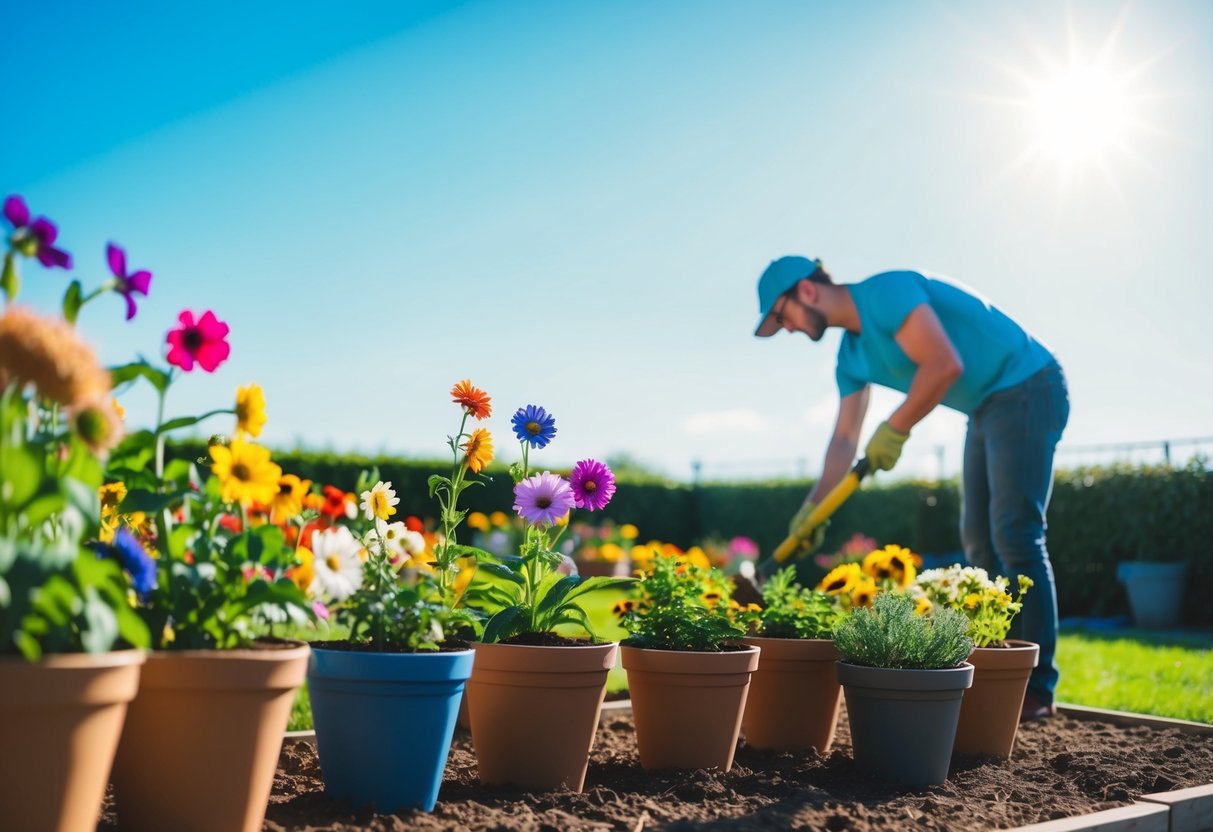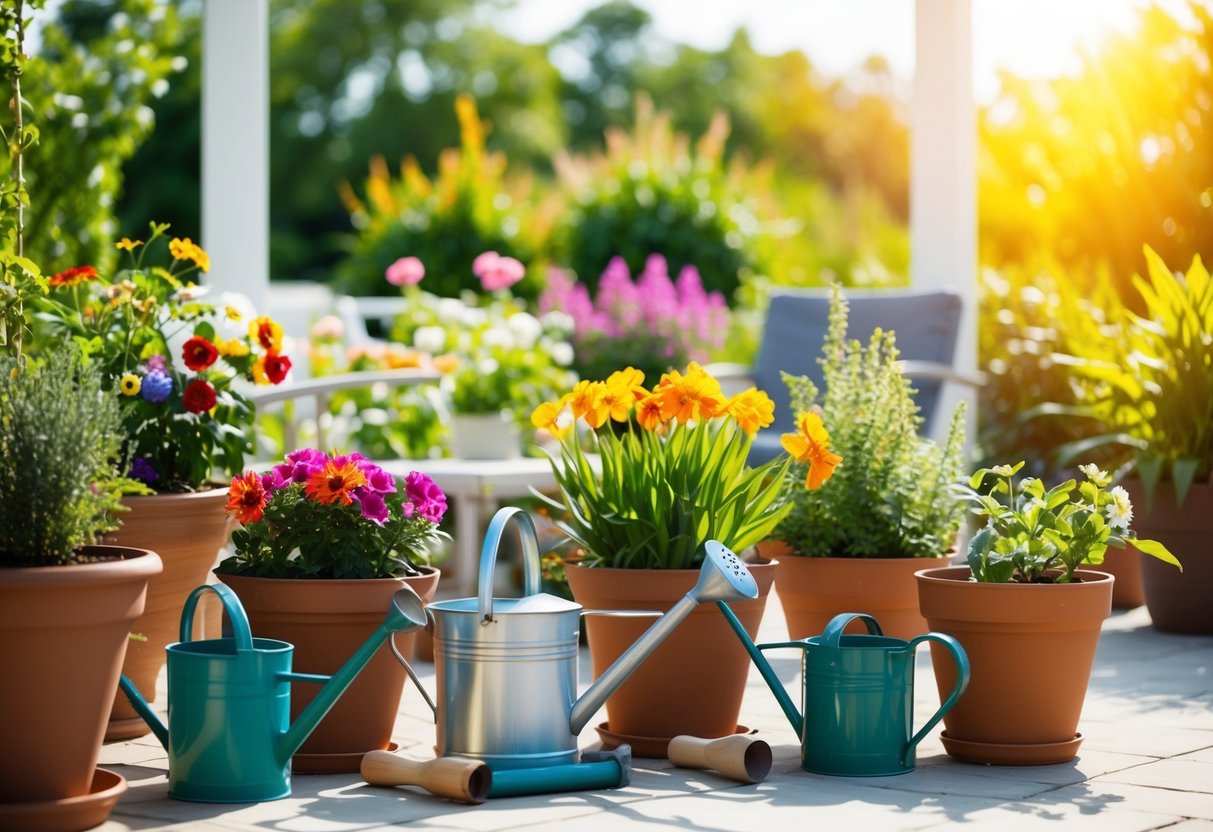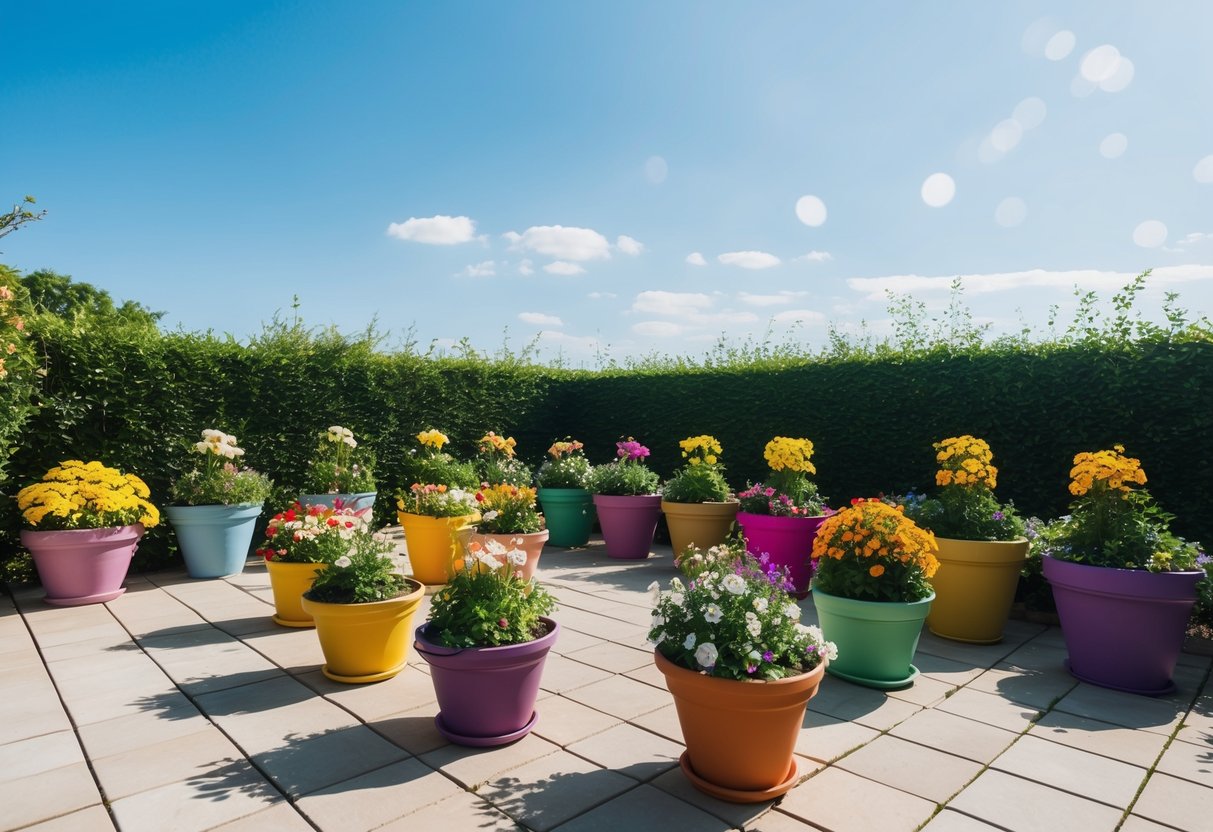When Can I Put Flowers in Pots Outside? Tips for Every Season
As a gardener, you’re probably excited to bring your flowers outside and enjoy their blooms in pots. It’s important to know when the right time arrives for this transition to ensure that your plants thrive.
You can start moving your flowers in pots outside as soon as the risk of frost has passed and temperatures are reliably warm enough for the specific plants you’ve chosen. This often happens in the spring, when the nights become milder and the days warm up consistently.

Understanding the particular needs of each flower type is key. Flowers such as petunias and sweet potato vines enjoy basking in full sun and flourish in pots on your patio, offering vibrant colors and lush growth. However, some plants may require a bit more care depending on your local climate.
For guidance, check out insights like those on putting your container plants outside, which advise that Mediterranean plants can go outside in early April if frosts are no longer expected.
Choosing the right flowers for container gardening can greatly enhance your garden’s beauty with ease. With options like easy-to-grow flowers in pots and low-maintenance plants such as rosemary, you can create a vibrant, colorful display.
Remember to consider the weather and the needs of your plants so that your gardening efforts flourish outdoors!
Understanding the Basics of Container Gardening

Getting started with container gardening involves choosing suitable containers, ensuring proper drainage, and selecting the right potting mix. These elements are crucial for keeping your plants healthy and thriving.
Choosing the Right Containers
When selecting containers for your garden, consider both size and material. Size matters because plants need enough room for their roots to grow. Larger pots can hold more soil, which helps keep the roots moist.
Materials like clay, plastic, and metal each have pros and cons. Clay pots are porous and allow air and moisture to move through, but they can dry out more quickly. Plastic pots are lightweight and retain moisture well. Metal containers provide durability but can heat up under the sun, which might harm your plants.
Whatever you choose, ensure your pots are suitable for the plants and the space you have.
Importance of Drainage in Pots
Drainage is a critical aspect of keeping plants healthy. Without proper drainage, water can build up at the bottom of the pot, and this excess water can cause root rot.
To avoid this, make sure your pots have drainage holes at the bottom. These holes let excess water escape and prevent waterlogged soil.
If your chosen container doesn’t have holes, you can drill some yourself. You might also use a drip tray underneath to catch any excess water that drains out, keeping surfaces clean and dry.
Good drainage allows roots to breathe and grow strong.
Selecting the Appropriate Potting Mix
Potting mix is different from regular garden soil. It’s lighter, allowing for better airflow and drainage, which are essential for plants grown in containers.
Always use a commercial potting mix designed for container gardening.
A good potting mix often includes ingredients like peat moss, pine bark, and perlite or vermiculite. These ingredients ensure a balance of moisture retention and air circulation for the roots.
Avoid using garden soil as it is too heavy and can limit drainage, leading to poor plant health.
Selecting the right potting mix sets a solid foundation for successful container gardening.
Selecting the Right Flowers for Your Pots

Choosing the right flowers for pots involves understanding different plant types and where they thrive best. Some need lots of sunlight, while others do better in shady spots. Whether you prefer annuals or perennials will also affect your options.
Annuals Versus Perennials
When selecting flowers, consider if you want annuals or perennials.
Annual flowers, like petunias, bloom throughout the growing season but need replanting each year. They provide vibrant colors and are often less expensive. Marigolds and geraniums are popular choices for brightening pots with annuals.
On the other hand, perennial flowers like pansies return every year, saving you money and effort. They establish deep roots and require less maintenance in the long term. Consider begonias if you want a reliable, long-lasting choice that will come back.
Sun-Loving Flowers
Choosing flowers based on sunlight is crucial. Sun-loving flowers flourish in bright spots and bring vibrant colors to your garden pots.
Petunias are an excellent option, thriving in full sun and adding a splash of color to any setup. They have a long blooming period and grow well in pots.
For a bold, bright choice, select marigolds. They love the sun and provide a golden hue that stands out. Geraniums are another sun-friendly choice, offering striking blooms and easy care.
Keep your pots in sunny locations to maximize their growth and beauty.
Shade-Tolerant Varieties
Sometimes, you need flowers that do well in shady areas. Shade-tolerant varieties are ideal for spots with limited sun exposure.
Impatiens are a popular option, thriving even in deep shade. They offer a wide range of colors and provide continuous blooms throughout the growing season.
For a reliable choice, go for begonias, which tolerate shade and still offer vibrant blooms. Pansies are another excellent option for these conditions, providing colorful flowers even in less sunny spots.
Choose the right flower for your shady area to ensure your pots are attractive throughout the season.
The Best Time to Start Your Container Garden

When it comes to starting your container garden, timing is key. You’ll want to pay attention to frost dates and the specific needs of your plants to ensure success. Knowing when to plant your geraniums, petunias, and other container plants can lead to a flourishing garden.
Understanding Frost Dates
Frost dates are important when planning your container garden. The last frost date tells you when it’s safe to start planting outdoors. If you plant too early, the frost can damage or kill your plants.
You can find this date by checking local gardening resources or weather forecasts. Typically, planting after the last frost date gives your container plants a better chance to thrive.
Certain flowers like geraniums and petunias are sensitive to cold. Waiting until the risk of frost has passed is crucial for their growth. These plants prefer warmer temperatures, so planning around your local frost dates is a smart move. If you’re eager to start early, consider using frost covers to protect young plants.
Seasonal Considerations for Planting
The season you’re in also impacts when to start your container garden. Spring is a popular time because of the increasing warmth and sunlight. Summer offers long daylight hours, ideal for vibrant petunias. Meanwhile, some plants may not withstand intense heat and might do better if planted in early spring or fall.
You should also consider the typical weather patterns in your area. For instance, if you live in a place with a long, hot summer, you might need to provide shade for your geraniums to prevent wilting.
Check your local climate and tailor your planting schedule to meet the needs of your specific plants. Keeping these seasonal factors in mind helps in creating a flourishing garden.
Caring for Your Potted Plants

Taking care of potted plants involves understanding the right watering techniques, knowing when and how to fertilize, and the importance of pruning and deadheading. These key steps help maintain healthy plants in different settings like hanging baskets, window boxes, and traditional pots.
Watering Techniques
Watering is essential for potted plants, but it’s important to do it right. Make sure your pots have good drainage to prevent root rot.
Water your plants early in the morning or late in the evening to minimize evaporation. It’s best to water deeply but less frequently, letting the soil dry out slightly in between.
Hanging baskets and window boxes might need more attention, as they tend to dry out faster. Use tools like a moisture meter to check the soil, especially during hot weather. Mulching can also help retain moisture and keep roots cool.
The Role of Fertilization
Fertilizing potted plants gives them the nutrients they need to thrive. Use a balanced, water-soluble fertilizer every few weeks during the growing season. Follow the package instructions for the correct amount.
Growing flowers in pots often need extra nutrients, as the soil depletes faster than in-ground gardening.
Consider organic fertilizers for a gentle nutrient boost. Pay attention to your plant’s specific needs; some might require more phosphorus for blossoming, while others might need more nitrogen for healthy foliage.
Watch for signs of nutrient deficiency, like yellowing leaves, and adjust accordingly.
Pruning and Deadheading
Pruning and deadheading are crucial for keeping your plants healthy and attractive. Pruning helps control size and shape while removing dead or damaged parts.
During flowering seasons, regularly deadhead by pinching off spent blooms. This encourages more blooms and prevents the plant from using energy on seed production.
With hanging baskets and window boxes, keep an eye on leggy growth. Pruning these back can help maintain a fuller and more lush appearance.
Maintain clean tools and use the right equipment to avoid spreading diseases. Regular attention to these tasks keeps your plants thriving and vibrant.
Creating Visually Appealing Arrangements

Crafting beautiful flower arrangements in pots involves thoughtful planning. You can achieve stunning effects by combining different flowers and playing with colors and textures.
Designing Mixed Containers
When creating mixed containers, start by choosing flowers with different heights and growth habits.
For instance, you might combine tall plants like hibiscus with mid-level ones such as fuchsia. Add a trailing plant like portulaca for extra flow and movement.
Think about leaf shapes and colors too. Strong contrasts can add a dynamic feel. Pair broad-leaved coleus with delicate lavender for a varied appearance.
This balance helps create a harmonious look. Don’t forget to consider how much sunlight your flowers need, ensuring they all thrive together in their shared space.
Considering Flower Colors and Textures
Selecting the right flower colors can greatly enhance your arrangements. Use complementary colors that make each bloom stand out.
You might pair the vibrant red of hibiscus with the soothing purple of lavender. This contrast draws the eye and creates a lively effect.
Textures are equally important. Mix soft petals of fuchsia with the smooth, shiny leaves of coleus. Adding different textures creates interesting visual layers.
A mix of rough and glossy leaves, for example, can make your arrangement more engaging. Check that the flowers will bloom simultaneously for consistent beauty throughout the season.







